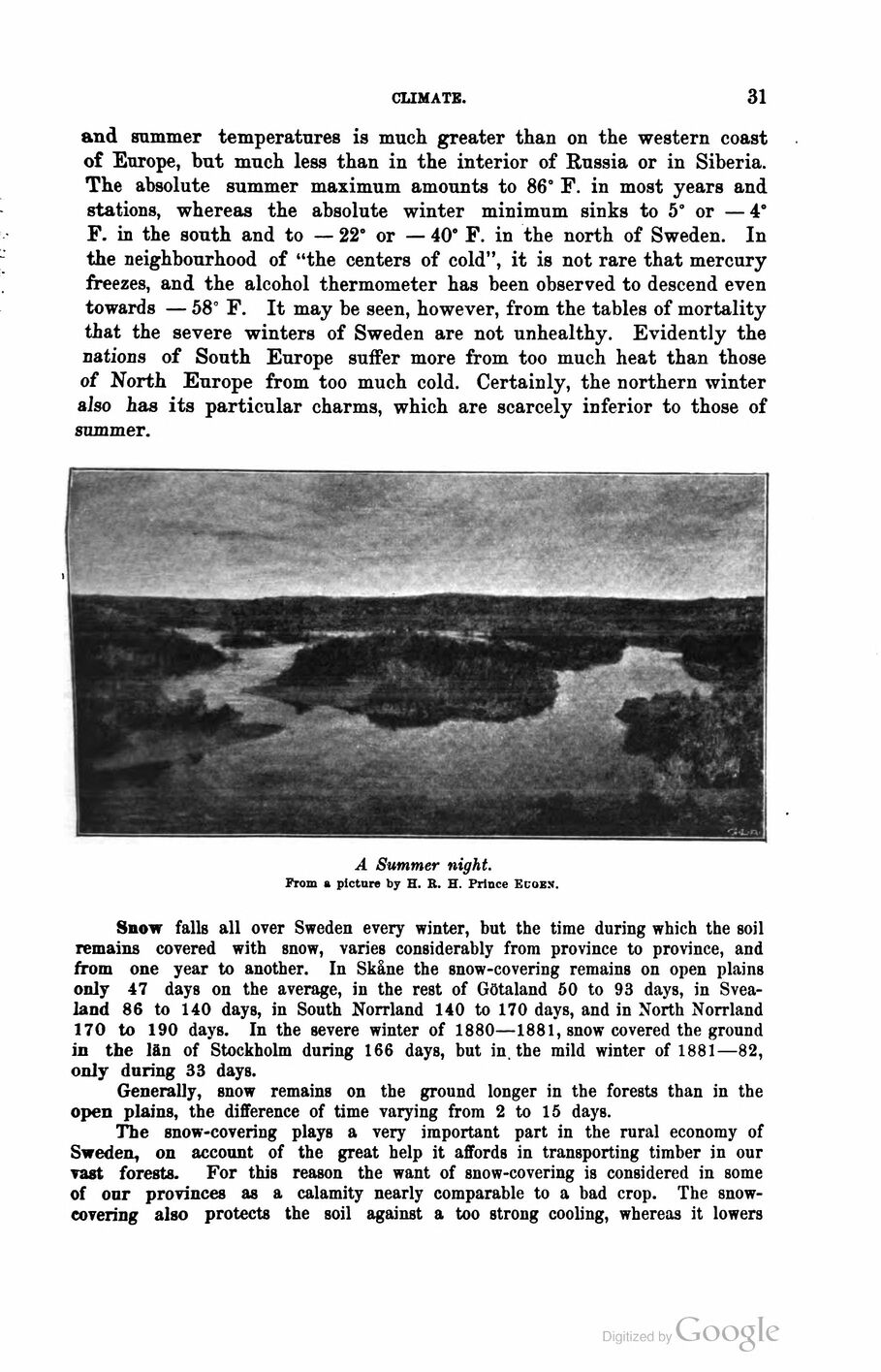
Full resolution (JPEG) - On this page / på denna sida - First part - I. Physical Geography - 2. Climate. By N. Ekholm, Ph. D., Central Meteorological Office, Stockholm

<< prev. page << föreg. sida << >> nästa sida >> next page >>
Below is the raw OCR text
from the above scanned image.
Do you see an error? Proofread the page now!
Här nedan syns maskintolkade texten från faksimilbilden ovan.
Ser du något fel? Korrekturläs sidan nu!
This page has never been proofread. / Denna sida har aldrig korrekturlästs.
CLIMATE.
31
and summer temperatures is much greater than on the western coast
of Europe, but much less than in the interior of Russia or in Siberia.
The absolute summer maximum amounts to 86° F. in most years and
stations, whereas the absolute winter minimum sinks to 5° or —4°
F. in the south and to — 22° or — 40° F. in the north of Sweden. In
the neighbourhood of "the centers of cold", it is not rare that mercury
freezes, and the alcohol thermometer has been observed to descend even
towards — 58° F. It may be seen, however, from the tables of mortality
that the severe winters of Sweden are not unhealthy. Evidently the
nations of South Europe suffer more from too much heat than those
of North Europe from too much cold. Certainly, the northern winter
aiso has its particular charms, which are scarcely inferior to those of
summer.
A Summer night.
Prom a picture by H. B. H. Prince Euoex.
Snow falls all over Sweden every winter, but the time during which the soil
remains covered with snow, varies considerably from province to province, and
from one year to another. In Skåne the snow-covering remains on open plains
only 47 days on the average, in the rest of Götaland 50 to 93 days, in
Svealand 86 to 140 days, in South Norrland 140 to 170 days, and in North Norrland
170 to 190 days. In the severe winter of 1880—1881, snow covered the ground
in the län of Stockholm during 166 days, but in. the mild winter of 1881—82,
only during 33 days.
Generally, snow remains on the ground longer in the forests than in the
open plains, the difference of time varying from 2 to 15 days.
The Bnow-covering plays a very important part in the rural economy of
Sweden, on account of the great help it affords in transporting timber in our
vast forests. For this reason the want of snow-covering is considered in some
of our provinces as a calamity nearly comparable to a bad crop. The
snow-covering also protects the soil against a too strong cooling, whereas it lowers
<< prev. page << föreg. sida << >> nästa sida >> next page >>